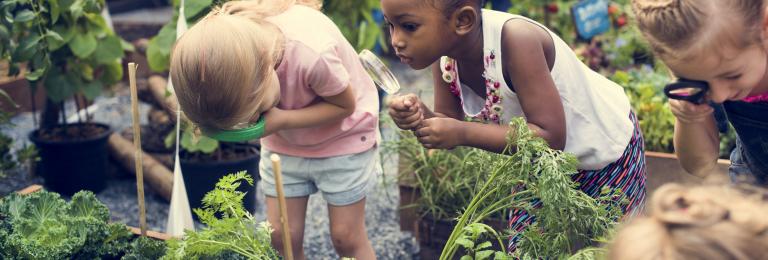Birds, Bees & Butterflies
Learn about our pollinators
To build food literacy in the 0-5 age group, children can learn about the importance of certain creatures and their role in our food system. We depend on these creatures! Honey bees, for example, pollinate approximately one-third of the food we eat.
What is pollination?
Creatures like hummingbirds, bees, beetles and butterflies travel from one flower to another. When they are on a certain part of the flower, called the stamen, they pick up pollen on their legs and bodies. When they land on the next flower, some of that pollen falls off and fertilizes the next flower, allowing it to produce fruit and seeds. They don’t do this on purpose; they are after the sweet nectar (like a juice) in the flowers, which bees then use to make honey.
Here are some activity ideas to learn about pollination:
- Go on a nature walk. Search for bees, beetles and butterflies. Get children to look for flowers that attract bees, especially purple ones like lavender and foxglove.
- Create a pollinator-friendly garden. Plant species of plants that attract butterflies to create a magical outdoor space.
- Play pollinator tag or relay race. Divide the group into bees, birds and/or butterflies and have them collect pollen (use yellow construction paper) from one flower (use sidewalk chalk) and deposit it in a different one.
- Honey taste test. For this test children must be older than 1 year of age. Bring in a few types of honey and give children the opportunity to taste.
- Arts & crafts. Create pollinator masterpieces, drawing or colouring pictures of colourful gardens or beautiful butterflies.
For more ideas and resources
Learn more about pollination: http://cwf-fcf.org/en/resources/for-educators/educational-units/pollinators-from-flowers-to-food-to-our-future/
Create a pollinator-friendly garden: https://davidsuzuki.org/queen-of-green/create-pollinator-friendly-garden-birds-bees-butterflies/
